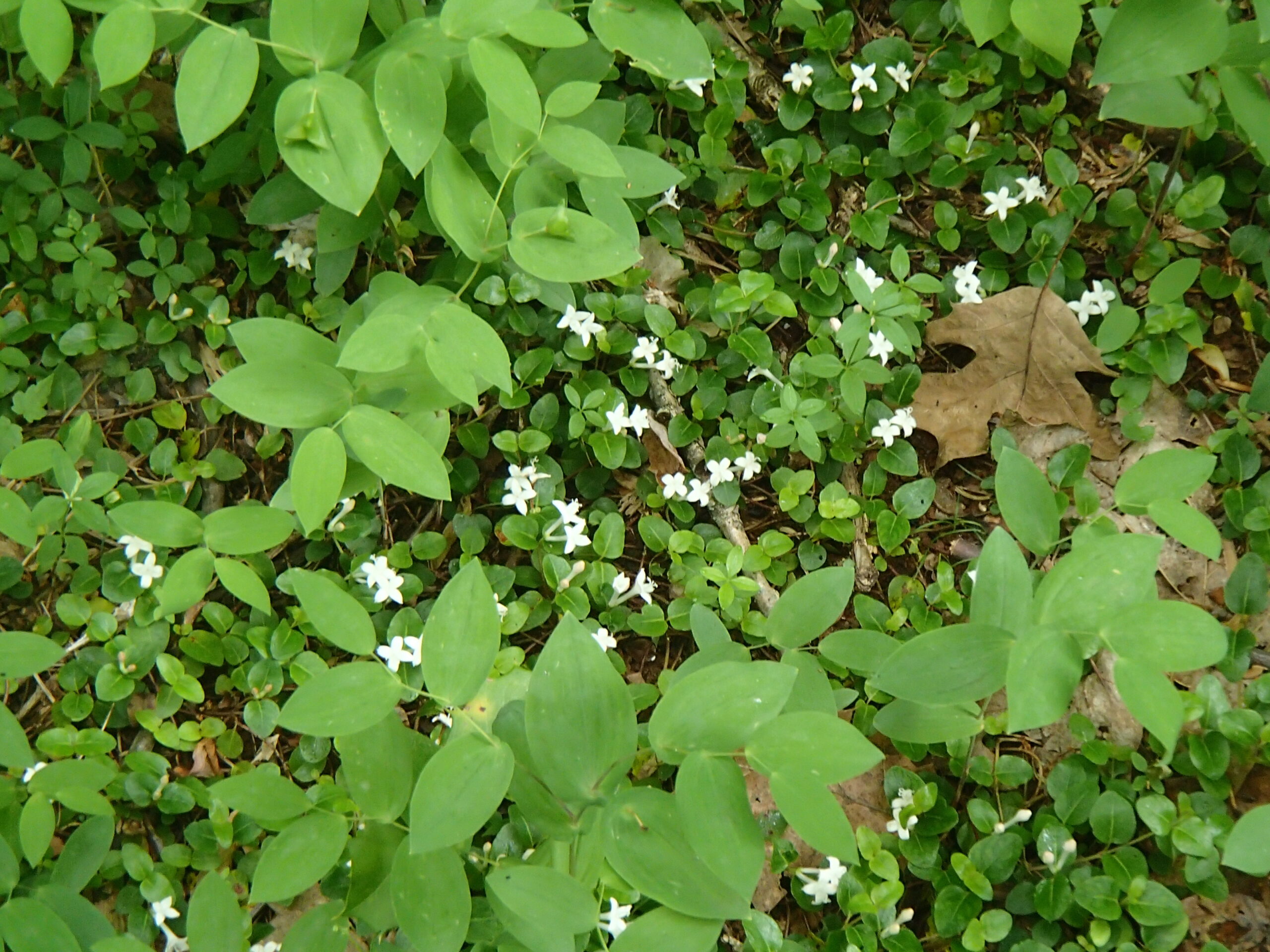Partridgeberry is a beautiful, trailing, evergreen, mat-forming woody vine, no taller than two inches, reported in all states of eastern North America, and thriving in our piedmont Oak Hickory forest understory. Its leaves are rounded, paired, rich dark green with white markings, 1/2 to 3/4-inch long. Its tiny white, fragrant, tubular flowers occur in pairs also, in May to July. The two flowers are fused at the base and produce a single bright scarlet berry in the late summer/fall. The berries, and the flowers as well, are very visually appealing and stand out boldly against the dark green, rounded leaves. Partridgeberry will thrive under acid-loving shrubs in rich woodland soils, rooting at the nodes, and is a must for a shady rock garden. Partridgeberry will tolerate dry soil and dense shade if it is undisturbed. The berries are edible and support birds and small mammals in the winter.
NURSERY HOURS
Wednesday: 10-4 Thursday: 10-6 Friday-Saturday: 10-4 Sunday: 12-4
Mitchella repens

Key Info
Scientific Name: Mitchella repens L.
Common Names: Partridgeberry, Pigeon Plum, Squaw Vine, Twinberry, Running Box
Family Names: Rubiaceae (Coffee Family)
Leaf Retention: Evergreen
Flower Color: White
Special Characteristics: Tolerates shade, Showy fruit, Evergreen, Tolerates dry conditions, Edible fruit (in jams)
Additional Info
Habit: Woodland creeper, groundcover of prostrate stems which root at the nodes on moist soil. The root system is fibrous.
Height: 2 inches
Spread: Indeterminate
Soil Conditions: Moist to average, acidic, organic, sandy, sandy loam, medium loam.
Leaves: Small (¼- to 3/4-inch) rounded dark green leaves (lighter beneath) with slightly undulate margins and light venation, grow in pairs.
Flowers (or reproductive structures: Partridgeberry is dioecious, meaning male flowers (with long stamens and short pistil) and female flowers (with long pistil and short stamens) are on separate plants. Pairs of small (1/2 inch), perfect, white, 4-lobed trumpet-shaped flowers in late spring to mid-summer, in axils of leaves or terminal.
Fruit: Bright red, round, fleshy berries up to 1/3" across containing up to 8 seeds develop in late summer/fall. The berries can persist throughout the winter and into the spring of the following year.
Natural Distribution: Partridgeberry is found in high quality natural areas, in upland woods, streambanks, sandy slopes, wooded ravnes.
USDA Hardiness Zone: 3 to 8
USDA Wetland Indicator Status in NC: FACU
Pollination: The flowers are cross-pollinated by bumblebees.
Wildlife Connections: Very few insects feed on the foliage of Partridgeberry. Upland gamebirds (Ruffed Grouse, Bobwhite Quail, Wild Turkey) feed on the fruits. Mammals that feed on the fruits include the Red Fox, Eastern Skunk, Eastern Chipmunk, White-Footed Mouse, and Woodland Deer Mouse. These animals spread the seeds of the berries to new locations. (Illinoiswildflowers.info)
Propagation: By seeds and by division.
